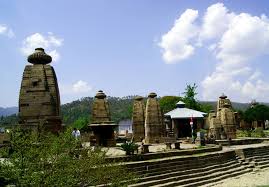Deoghar Baidyanath (Vaidyanatha ) Mandir ( Jyotirlinga)- Jharkhand

Address
Deoghar Baidyanath Mandir (Baba Dham Mandir)- Shivganga Muhalla, Dardmara, Jharkhand 814112
Deity
Baidyanath, Amman: Taiyal Nayaki
Introduction
- The Vaidyanatha Jyotirlinga temple, also known as Baba Baidyanath Dham, is located in Deoghar, Jharkhand, India.
- It is one of the twelve Jyotirlingas, sacred abodes of Lord Shiva.
- The temple complex consists of the main Baba Baidyanath temple housing the Jyotirlinga and 21 other temples.
- The region has historical and archaeological significance, dating back to the Vedic period.
- The name “Deoghar” means “Adobe of Gods,” linked to the establishment of the Baidyanath temple.
- Baidyanath Dham is also one of the 51 Shakti Peeths in India.
Puranic Significance:
- Baidyanath Dham is mentioned in the Dwadasa Jyotirlinga Stotram by Adi Sankaracharya.
- The Matsya Purana refers to it as “Arogya Baidyanath,” where Shiva and Shakti heal people of incurable diseases.
- Legend states that Ravana, king of Lanka, performed intense penance at this site to bring Lord Shiva to Lanka.
- Shiva agreed to accompany Ravana in the form of a Shivlinga, with the condition that Ravana would not place it on earth until reaching Lanka.
- Due to divine intervention by Vishnu and the Ganga, Ravana was forced to place the Shivlinga on the earth, leading to the formation of Baidyanath Jyotirlinga.
Beliefs:
- Ravana offered his ten heads to Shiva in sacrifice to obtain boons.
- Shiva, pleased by Ravana’s devotion, healed him and earned the title “Vaidhya” (doctor).
- The temple is named “Baidyanath” after Shiva’s role as a healer.
Special Features:
- The story behind the Jyotirlinga is related to a cosmic dispute between Vishnu and Brahma about creation supremacy.
- Shiva manifested as an endless pillar of light, the Jyotirlinga, to resolve the dispute.
- Vishnu and Brahma failed to find the end of the pillar; Brahma lied, and Shiva cursed him.
- The Jyotirlingas represent Lord Shiva’s infinite, divine presence, symbolized by the lingam, signifying his infinite nature.
- Baidyanath Dham, as one of the twelve Jyotirlingas, allows devotees to connect with Shiva’s infinite form.
Festivals
Mahashivratri
Century/Period/Age
2000 years old
Managed By
Government of Jharkhand
Nearest Bus Station
Deoghar and Jasidih
Nearest Railway Station
Deoghar and Jasidih
Nearest Airport
Ranchi, Durgapur









